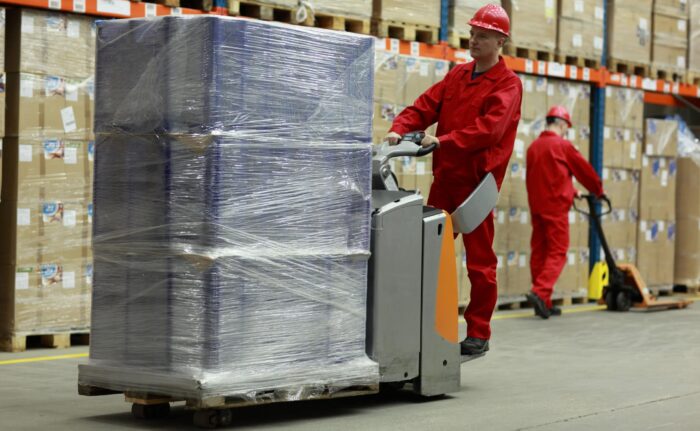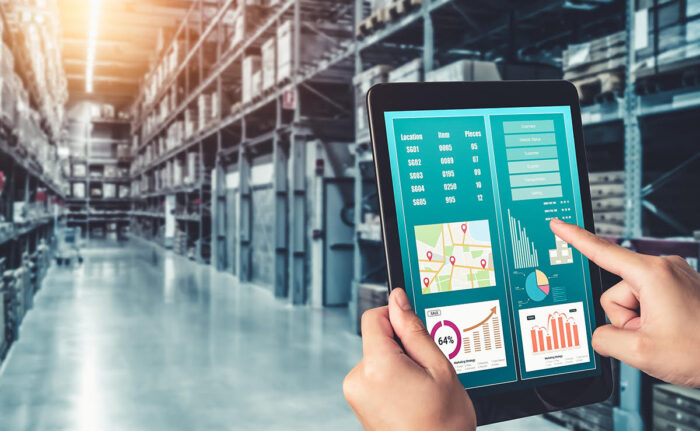
You know what customers really want? Exceptional service, punctuality, accountability, and reliability—every single time. Meeting those expectations requires more than trucks on the road; it demands technology that closes the gap between the warehouse and the customer’s front door. That’s where last-mile delivery software, such as a Proof of Delivery (POD) system, comes in. A POD system goes beyond simply confirming that a package has arrived. It creates a digital trail of accountability, provides critical documentation to quickly resolve disputes, and gives customers the transparency they expect. At the same time, it helps businesses streamline operations, reduce errors, and improve efficiency. To better understand the full value of a POD system, this article will cover:
- What is a Proof of Delivery (POD) System?
- What is Electronic Proof of Delivery (ePOD)?
- What are the Different Types of Proof of Delivery?
- What Information is Included in Proof of Delivery?
- Why is a Proof of Delivery (POD) System Important?
- What are the Key Features to Look For in a Proof of Delivery (POD) System?
- What are the Benefits of a Proof of Delivery System?
- What are the Challenges to Avoid When Choosing a Proof of Delivery System?
What is a Proof of Delivery (POD) System?
A Proof of Delivery (POD) system provides clear confirmation that shipments have reached their destination safely, on time, and with all required signatures. Whether handling high-value items, regulated goods, or everyday products, a POD system captures crucial delivery details and gives you full visibility into the last mile. It acts as a safeguard against disputes, delays, and operational errors. In today’s fast-paced supply chains, POD systems are more than a convenience—they’re essential. They help teams close the delivery loop, optimize workflows, and deliver the transparency and reliability customers demand.
What is Electronic Proof of Delivery (ePOD)?
Electronic Proof of Delivery (ePOD) takes delivery confirmation into the digital age. Replacing paper signatures and manual logs, ePOD leverages mobile devices, cloud platforms, and real-time syncing to verify every handoff. Drivers can capture digital signatures, scan barcodes, take photos of delivered goods, and record timestamps—all on the spot. The result is instant, tamper-proof confirmation that shipments arrived as intended, with secure, easily accessible records for both operations and customers.
What are the Different Types of Proof of Delivery?
POD systems can take different forms depending on your business model and industry. Here’s a quick breakdown:
- Paper-Based POD: Traditional and manual. Still in use in some industries but prone to loss, damage, and human error.
- Electronic POD (ePOD): Digital and dynamic. Captures signatures, GPS data, photos, and delivery notes in real time.
- Photo POD: Often used for contactless delivery, captures an image of the delivered item at the drop-off location.
- Signature POD: Captures the recipient’s signature as confirmation, either digitally or on paper.
- Barcode or QR Code Scan POD: Confirms delivery by scanning a product or shipment-specific code.
Most modern companies leverage a combination of these methods—ePOD systems make it possible to adapt to customer preferences and compliance requirements.
What Information is Included in Proof of Delivery?
A robust POD system captures more than just a signature. Key information typically includes:
- Date and time of delivery
- Name and signature of the recipient
- GPS location data
- Barcode scans or order number references
- Condition of goods (often via photos)
- Driver notes or delivery exceptions (e.g., damaged packaging, inaccessible locations)
This data creates a verified chain of custody, supporting compliance, customer service, and operational decision-making.
Why is a Proof of Delivery (POD) System Important?
In distribution, what you can’t see can hurt you. POD systems bring much-needed visibility to the final step in your supply chain, where mistakes are costly and customer expectations are highest. With a modern POD system, you can reduce delivery disputes, confirm deliveries in real time, and improve accountability across your teams. It also helps optimize driver routes, boost customer satisfaction, and provide a reliable audit trail for compliance or legal needs. Bottom line: a POD system closes the information gap and turns your last mile into a real competitive advantage.
What are the Key Features to Look For in a Proof of Delivery (POD) System?
Over the years, delivery confirmation has evolved from paper-based signatures and manual logs to fully digital, real-time systems. When evaluating POD solutions, look for POD software features that truly move the needle across your last-mile operations, such as:
POD System Feature #1: Mobile App Compatibility
Your team needs real-time visibility, and that starts with mobile. Drivers should be able to log deliveries, capture signatures, and share updates from the field. A mobile-friendly POD system keeps everyone connected, every mile of the way.
POD System Feature #2: Signature and Photo Capture
Proof matters. Built-in signature and photo capture closes the loop on delivery, providing verifiable confirmation that goods made it to the right place, in the right condition.
POD System Feature #3: GPS and Time Stamping
The moment a package is delivered should never be a mystery. GPS location tracking and time stamps confirm when and where deliveries happen, helping you meet SLAs and build customer confidence.
POD System Feature #4: Barcode Scanning
Accuracy isn’t optional. With barcode scanning, drivers can validate every package, ensuring the right order reaches the right customer—no guesswork, no mistakes.
POD System Feature #5: Offline Functionality
Connectivity isn’t always guaranteed, but delivery still needs to happen. A strong POD system keeps working even when offline, syncing automatically when the signal returns.
POD System Feature #6: Real-Time Sync
When deliveries happen in real time, your data should, too. A POD system with real-time sync eliminates batch delays and provides up-to-the-minute status across your operation.
POD System Feature #7: Exception Management
Issues happen. The right system empowers drivers to flag exceptions—damages, delays, or missed deliveries—immediately, giving your team the insight needed to act fast.
POD System Feature #8: Back-End Integration
A POD system shouldn’t live in a silo. It should integrate smoothly with your WMS, TMS, ERP, and beyond, turning delivery data into business intelligence that drives better decisions.
What are the Benefits of a Proof of Delivery System?
The right POD system can drive value across the board. Here’s what it can unlock for your operation:
Proof of Delivery System Benefit #1: Fewer Disputes
With time-stamped signatures, photos, and location data, you have hard proof of delivery at your fingertips. That means fewer customer complaints, faster resolutions, and less revenue lost to false claims.
Proof of Delivery System Benefit #2: Faster Billing Cycles
The moment delivery is verified, billing can be triggered—no manual follow-ups, no chasing paper. You accelerate your cash flow while reducing the burden on your finance team.
Proof of Delivery System Benefit #3: Stronger Customer Experience
Today’s customers expect visibility. A POD system gives them real-time delivery updates and confirmation, building trust, reducing inbound “where’s my order” calls, and driving repeat business.
Proof of Delivery System Benefit #4: Greater Driver Efficiency
Drivers can capture everything they need from a mobile device—no clipboards, no back-office re-entry. That saves time on every stop and gets them back on the road faster, completing more deliveries in less time.
Proof of Delivery System Benefit #5: Data-Driven Decisions
Every delivery tells a story. Analyze POD data to track driver performance, spot delivery slowdowns, and uncover trends that help you streamline routes, improve productivity, and optimize your last-mile strategy.
Proof of Delivery System Benefit #6: Improved Compliance
Industries like pharma, food, and high-value goods require detailed delivery records. With digital POD, you have the documentation you need: accurate, auditable, and ready when regulators come calling.
What are the Challenges to Avoid When Choosing a Proof of Delivery System?
Implementing any kind of enterprise solution comes with its own set of complexities, but that doesn’t mean you can’t prepare for them. To unlock the full value of a POD system, avoid these common pitfalls:
- Overcomplicated User Interfaces: Drivers need tools that work for them, not software that gets in their way. If your POD system is clunky or confusing, adoption will suffer, and so will delivery performance. Look for a platform that’s intuitive, fast, and easy to use from the cab or the curb. It should make a driver’s job easier, not harder.
- Poor Integration: A POD system that doesn’t connect to your WMS, TMS, or ERP is a disconnected investment. Don’t leave your data in a silo. Seamless integration ensures that delivery updates flow automatically across your supply chain, improving visibility, accuracy, and response time.
- Limited Offline Capabilities: Connectivity isn’t a given in every delivery zone. If your POD system can’t function without Wi-Fi or mobile data, it’s not reliable. Choose a solution that lets your team capture signatures, photos, and timestamps even in offline mode—then syncs automatically when back online.
- Inflexible Workflows: Your business shouldn’t have to adapt to your software. Your POD system should flex to match your delivery processes—whether you’re handling direct store delivery, white-glove service, or curbside drop-offs. The right system fits your operation, not the other way around.
- Lack of Scalability: POD isn’t just for where you are, it’s for where you’re going. Whether you’re adding new regions, increasing delivery volume, or onboarding new teams, your system should scale effortlessly. Make sure your investment supports growth without disruption.
If you’re looking to delight your customers with last-mile delivery, then you want a POD system that can deliver. Learn more about DeliveryExpert, Made4net’s Automated Proof of Delivery system.


